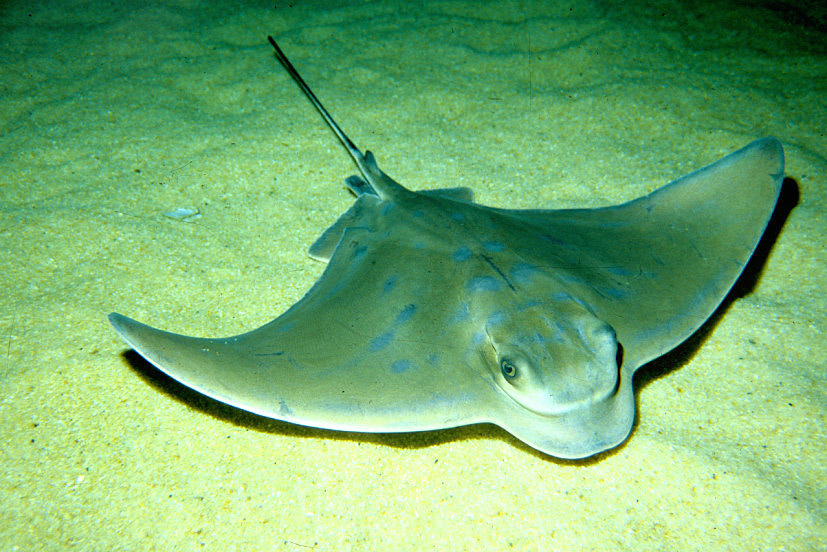The Ray is a fascinating creature that belongs to the family of cartilaginous fish. These creatures are known for their long slender tails, camouflaged skin, movable eyes, sensitive snouts, spiracles, and fun rays. Rays have been around for millions of years, and they have evolved to become highly adapted to their environment. In this article, we will explore the unique features of Rays, their behavior, habitat, and some interesting facts about these creatures.
Features of Rays:
- Long Slender Tail: Rays are known for their long slender tails, which make up a significant portion of their body length. This tail is used for swimming and helps the ray to move gracefully through the water. The tail of a ray is also used for defense and can be used to deliver a powerful blow to an attacker.
- Camouflaged Skin: Rays have camouflaged skin that helps them blend in with their environment. The skin of a ray is covered in small, flat scales that are arranged in a pattern that mimics the color and texture of the seabed. This camouflage helps the ray to avoid detection by predators and makes it easier for them to hunt prey.
- Movable Eyes: One of the most unique features of rays is their movable eyes. Unlike most fish, which have eyes that are fixed in position, rays can move their eyes independently. This allows them to keep an eye on their surroundings and spot potential prey or predators.
- Sensitive Snout: Rays have a highly sensitive snout that is used for detecting food. This snout is covered in small sensory organs called ampullae of Lorenzini, which can detect even the faintest electrical signals produced by living organisms. This allows the ray to locate prey hidden in the sand or buried in the sediment.
- Spiracle: Rays have a spiracle, which is a small opening behind each eye. This opening is used for breathing, and it allows the ray to draw water into its gills without having to swim constantly.
- Fun Rays: The final unique feature of rays is their fun rays. These are specialized structures that extend from the sides of the ray's body and are used for protection and navigation. Fun rays are also used to detect changes in water pressure, which helps the ray to avoid obstacles and navigate through the water.
Behavior of Rays
Rays are generally solitary creatures and are most active at night. They spend most of their time resting on the seabed, buried in the sand or sediment. Rays are opportunistic feeders and will eat almost anything they can catch, including small fish, crustaceans, and mollusks.
When threatened, rays will use their long, muscular tails to deliver a powerful blow to their attacker. They may also use their camouflage to avoid detection, or they may swim away quickly to escape danger.
Habitat of Rays
Rays are found in a variety of habitats, including shallow reefs, deep-sea trenches, and everything in between. Some species of rays prefer to live in freshwater, while others are found exclusively in saltwater environments.
Rays are also known to migrate over long distances, and some species will travel hundreds or even thousands of miles each year to reach their preferred breeding or feeding grounds.
Interesting Facts about Rays:
- The largest species of ray is the manta ray, which can grow to be up to 23 feet wide.
- Rays are closely related to sharks and belong to the same family of cartilaginous fish.
- Some species of rays can live for more than 100 years.
- Rays have been used in traditional Chinese medicine for centuries, and their liver oil is believed to have medicinal properties.
- Rays are sometimes kept in public aquariums, where they are popular attractions due to their unique appearance and behavior.
Conclusion
Rays are a unique and fascinating group of fish that have captured the imaginations of scientists and animal lovers around the world. With their remarkable adaptations and intriguing behavior, rays are a true wonder of the natural world, and we have much to learn from these magnificent creatures.

